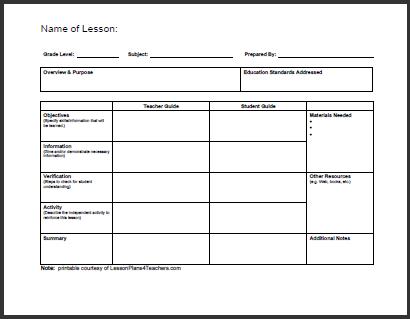IMPROVISATION
Quite simply, this is "making it up as you go along". It works best when there is some kind of simple framework (e.g. pupils are told the "beginning of the story" and take it from there). It may also be appropriate to set a few simple guidelines (e.g. "characters must not fight" may help to curb the natural tendency of exuberant young boys). Improvisation has the advantage over role play because children can "be themselves". Improvisation can be used in literacy lessons to develop storylines; in geography lessons to simulate living in different social conditions; or in history lessons to consider "how it might have been" or to generate "alternative endings" to historical scenarios.
|
|
COSTUME
While there is no need to use any costume at all, it can help remind pupils that they are "in character". There is no need to use anything complicated: a simple hat, cloak or scarf is often sufficient. You could use simple name-badges to remind children who's who.
|
ROLE PLAY
As in improvisation, children act out a scene - with the added factor that each is allocated a specific role or character. It is a good idea to allow children a few minutes to think about their character (or to discuss it with a friend) before the activity commences. Even so, the emphasis should be on play. Role play can be used in literacy or citizenship lessons to explore different points of view; in foreign language lessons to practice use of language; in science lessons to consider implications of using particular scientific inventions.
|
|
PROPS
Although there is no need to use props, it sometimes helps to have a few simple "bits and pieces" to hand. These can provide something for children to do with their hands. Props can also be used to indicate who the characters are (a crown for a king; a sword for a soldier; a Bible for a priest; etc.). It is often useful to have a few pieces of furniture available (a couple of chairs will do) that can form the "set".
|
 |
FREEZE FRAME
also called STILL PICTURES
This is a device to be used in conjunction with improvisation or role play. Upon a given signal from the teacher (clap, bell, etc.), children "freeze" in position. This enables exploration of what characters may be thinking, which can inform the continuing action. Children could discuss how many frames are needed to tell a story, which could inform a subsequent piece of writing. If children are asked to add a single phrase to the freeze frame, this encourages them into being selective about dialogue.
|
PUPPETS
Using puppets often means that children are less self-conscious - because it is the puppet who speaks (not the child), thus allowing the child to act in a way that they may not usually find easy. Thus, hitherto shy children may become more assertive (or even aggressive). Such behaviours can then be discussed openly because they belong to the puppet rather than the child.
Using a puppet who is only capable of "squeaking" can be a useful "half-way house" towards encouraging a child to speak on their own behalf as they "interpret" for the puppet.
Using a "squeaking-only" puppet can also be a useful way of developing children's questioning skills. In order to find out what the puppet is "thinking", children must frame questions to which the puppetcan respond with "one squeak for yes - two squeaks for no".
Although puppets are most useful with younger children, they can also be used with older children, who could be encouraged to write or rehearse a play to be shown to younger children.
|
SLOW MOTION
An extension of freeze frames. Children try to encapsulate a story or incident in as few frames as possible (perhaps before, during and after a dramatic moment). This can be used to provide the structure of a subsequent piece of writing. It also slows down the incident, encouraging attention to detail and enabling more detailed analysis (especially of the feelings of the characters involved).
|  |
|
|
SOUND TRACKING
Similar to thought tracking, except that children focus on what sounds the scene may contain (including voices). At a given signal from the teacher, children make their noise, which can then be discussed in more detail. This is a useful preparation for creative writing.
|
PAIRED CONVERSATION
This is a conversational rather than a dramatic device. Children work in pairs, seated and without props, to hold a conversation. Children can be allocated roles or speak from opposing viewpoints. The activity can be useful in preparing ideas to be used in persuasive writing tasks.
|  Click here for Magic Quilt activity Click here for Magic Quilt activity |
MAGIC CARPET
A magic carpet can be a useful device to indicate to a class or group that they are being transported (in their imagination) to somewhere special. It is especially useful in geography lessons, but could equally transport children "through time" in history lessons. You may wish to use an actual carpet or similar piece of heavy material.
|
THOUGHT TRACKING
This can be used in conjunction with freeze frame and focuses specifically on what the characters in the frame are feeling and thinking.
|
MIRRORING
A simple activity to encourage observation, concentration and physical expression. Working in pairs, face to face, one child takes the lead (by agreement) and performs a series of simple movements which their partner replicates - as if in a mirror. Alternatively, the whole class mirrors the movements of the teacher. The teacher starts with a simple sequence of movements which is then repeated - with additional movements added. Gradually a lengthy sequence can be built up, thus helping to develop children's memory skills. (The Body-pegs memory technique relies on just such an activity.)
|  |
MIMING
Simple mime games can serve several purposes. They can help children focus on how we show our emotions - which can lead to more descriptive writing. They can help children recognise similarities in patterns of movement - thus developing their use of simile and metaphor. They can also help children to develop simple physical mnemonics that can aid retention of information - and also facilitate understanding (see the BrainBites activity entitled Hand Sculpture).
|
HOT SEATING
One child takes the role of a character from a story (or an historical figure, or the inhabitant of a foreign country, etc.) and sits in the hot seatto face questions from the rest of the group. It may be appropriate to allow the hot-seater to prepare in advance - or the teacher may take on that role. If the person in the hot seat is a "baddy", it is a good idea for them to wear a simple piece of costume - to indicate that they are answering in role.
|
MODELLING
Working in small groups, one member of the group (the "sculptor") arranges the other members to form a tableau. This may be freeform or with a specific objective in mind (perhaps suggested by the teacher). This can then lead to discussion of the role of each tableau member - and thence on to thought tracking, etc.
Alternatively, the teacher may manipulate a number of children into a tableau, which the rest of the class discusses (or guesses), making suggestions for appropriate alterations etc.
|
ROLE ON THE WALL
Although not strictly a dramatic technique, this activity can be used as a follow-up from role play or thought tracking. A large outline drawing of a character is pinned on the wall (if you are "artistically challenged" you could draw around a child). Children write words around the outline to show how the character is perceived by others. Children also write words inside the outline to show the character's inner feelings. This can lead to useful discussion of real and fictitious characters.
|  |
CONSCIENCE ALLEY
Children stand facing each other in two lines that form an alley. As the character walks between the lines, each child that they pass speaks to their conscience - providing arguments for and against a possible course of action. It is not essential for every child to say something - and some children may wish to repeat a previous contribution.
If there are several options for the main character to consider, the activity could be adapted into a "conscience triangle" or a "conscience square".
|
PERFORMANCE
Although it is not necessary for every piece of "dramatic" work to result in a performance, the opportunity to present work to an audience does show that the work has been valued and helps to develop children's confidence. Whereas a proper performance may require more rehearsal time than you are prepared to allocate, a compromise solution is for children to present a makeshift performance in a "good work assembly" or similar occasion. Although this may require polishing up, children are usually more than happy to do this during lunchtime or a "wet playtime".
|
|
I am indebted to Paula Marris for her assistance in compiling this list of dramatic techniques. Paula is an independent drama teacher who is particularly skilled at using drama to develop a range of skills and competences. She has initiated a number of innovative drama projects, details of which can be found on herwebsite.
|

 To summarize, and in very basic terms: a lesson plan is the teacher's guide for running a particular lesson, and it includes the goal (what the students are supposed to learn), how the goal will be reached (the method, procedure) and a way of measuring how well the goal was reached (test, worksheet, homework etc).
To summarize, and in very basic terms: a lesson plan is the teacher's guide for running a particular lesson, and it includes the goal (what the students are supposed to learn), how the goal will be reached (the method, procedure) and a way of measuring how well the goal was reached (test, worksheet, homework etc).




















/about/memrise-logo-579bd4db5f9b589aa9789d2a.png)



